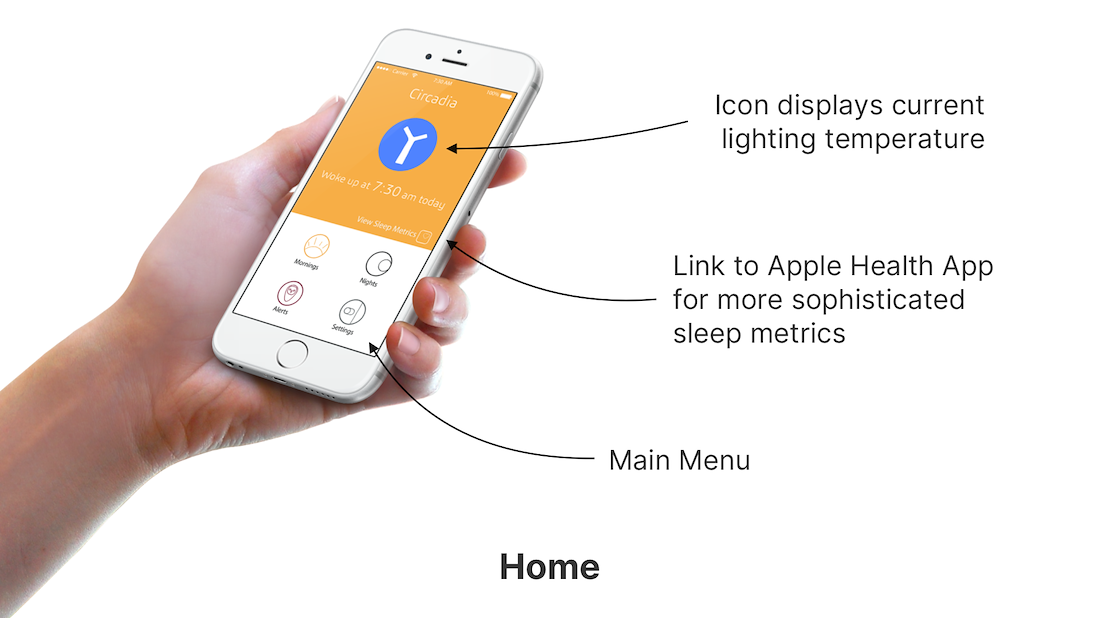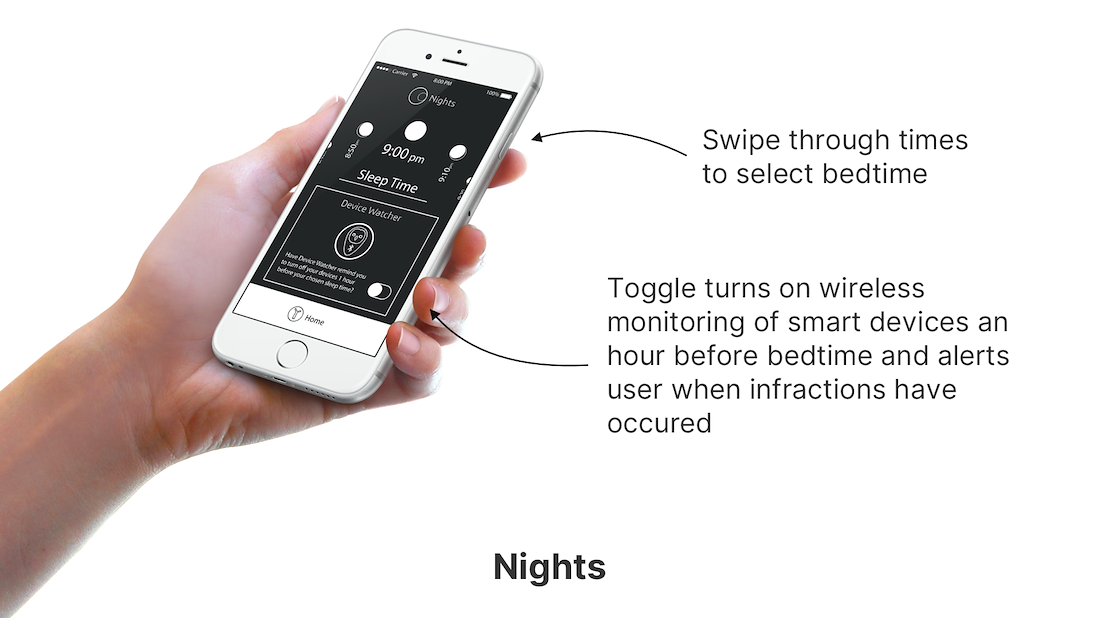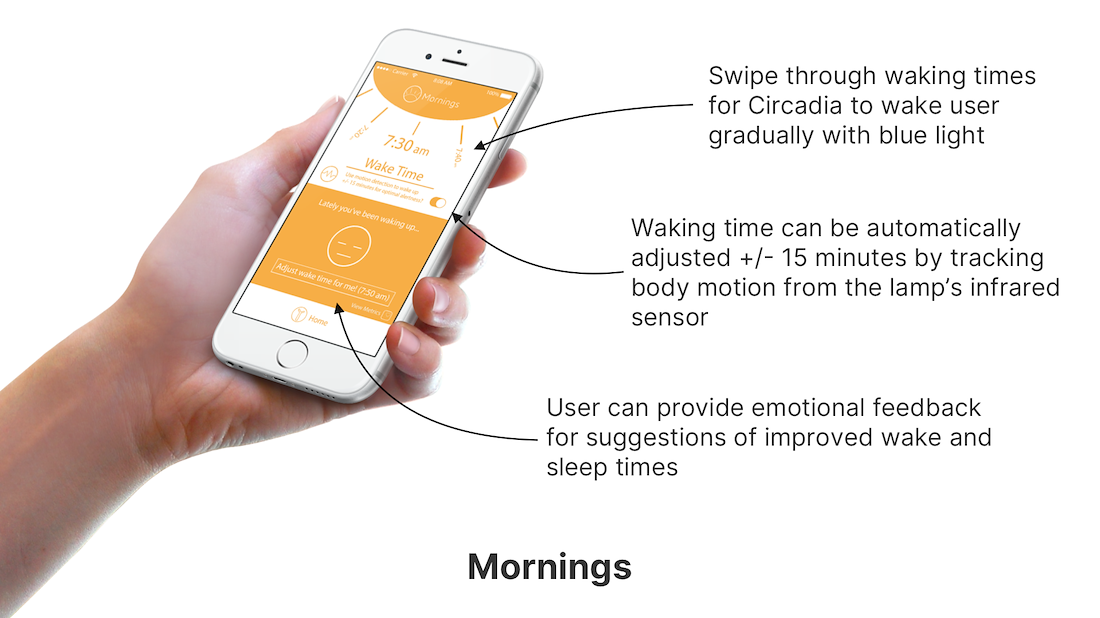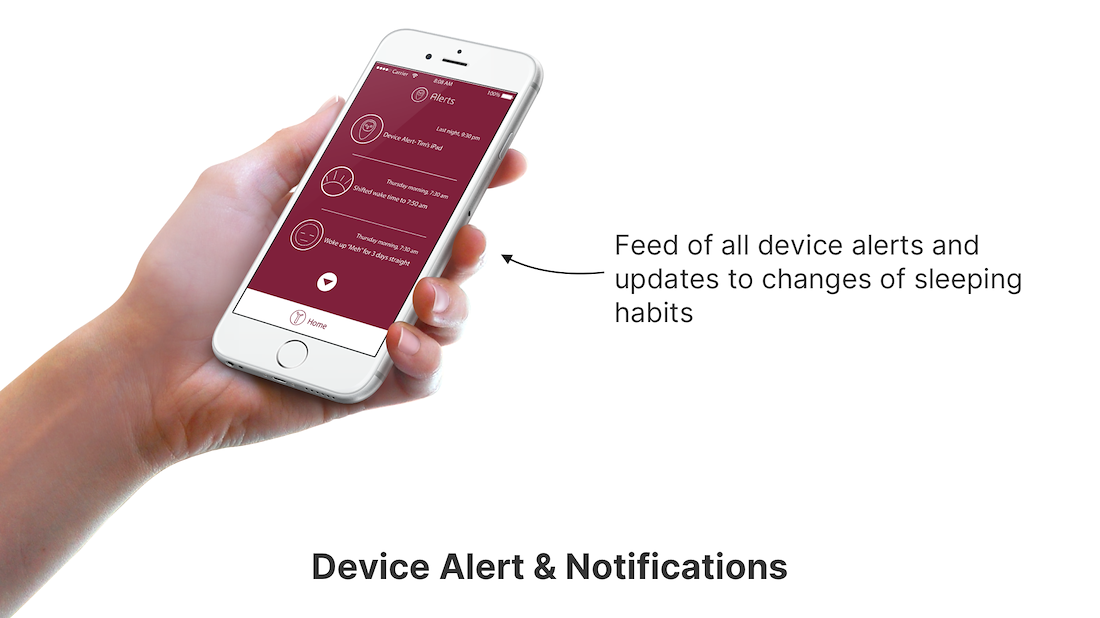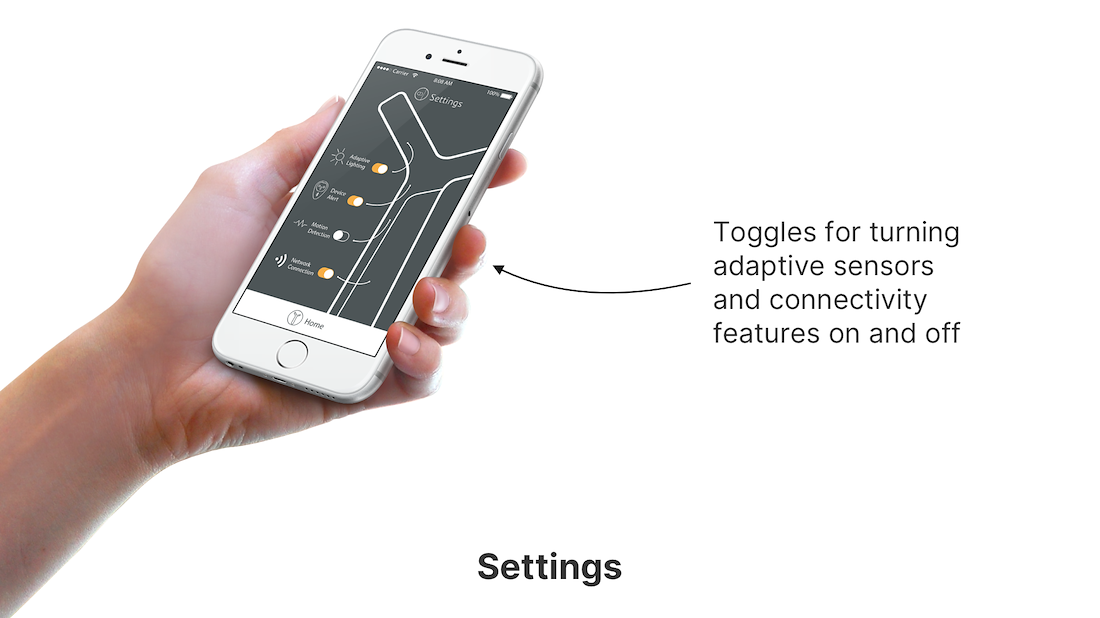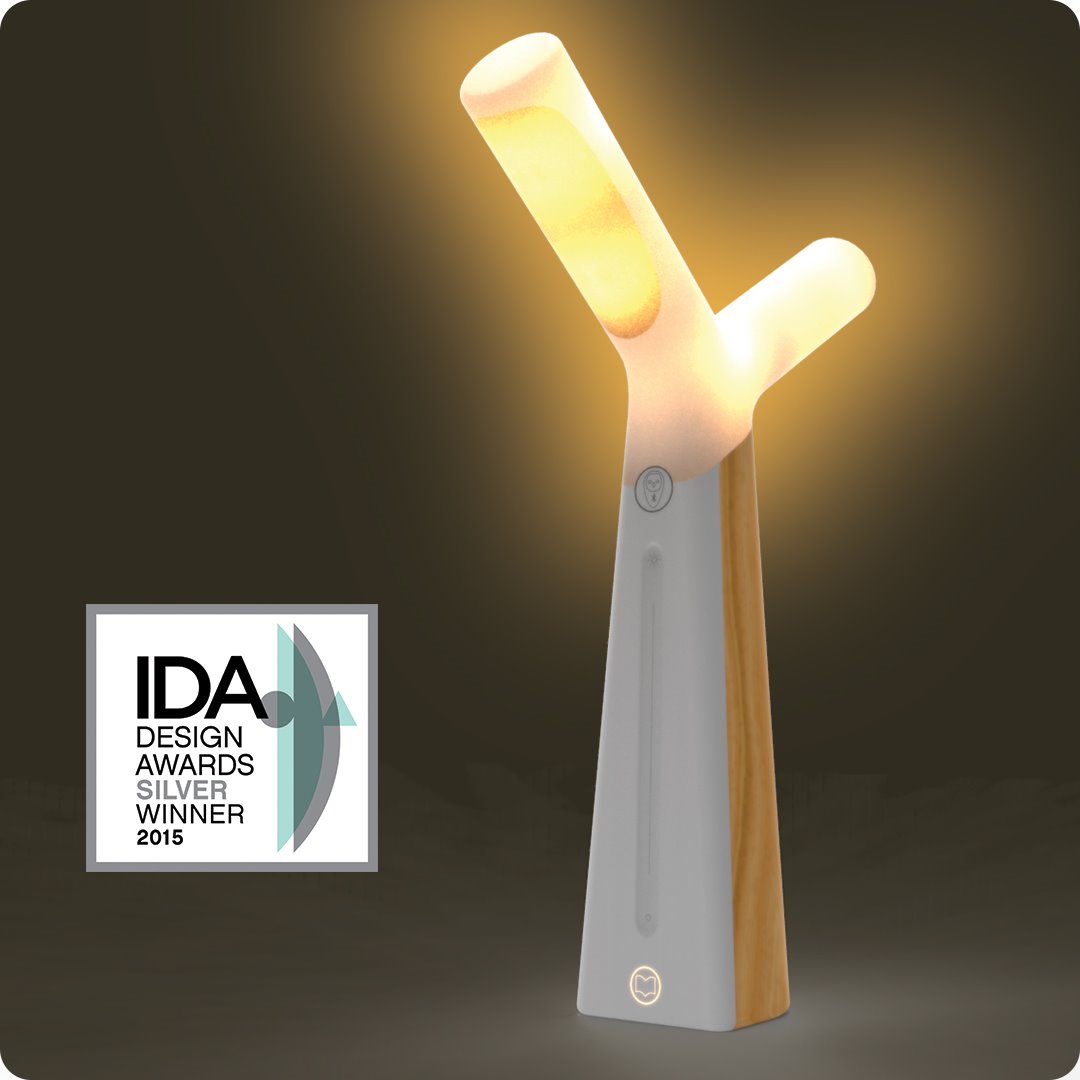

— PROJECT NAME
Circadia – SCAD Senior
Capstone Projet
— ROLE
Industrial Design
Interaction Design
— TOOLS
Rhino 3D
KeyShot Render
Photoshop & Illustrator
Woodshop
Circadia is a bedside smart lamp designed to instill better sleeping habits in an age of endless screen time and billions of addictive portable devices.
My senior capstone project at the Savannah College of Art and Design, Circadia is the result of a 10 week sprint of user research, form development, and interaction design.
This final result was the recipient of an International Design Award, taking silver in the category of Home Interior Products – Lighting.
INITIAL RESEARCH
Understanding sleeping habits in an interconnected world
DESK RESEARCH
With my own poor sleeping habits at the time fueling inspiration, I wanted to first thoroughly research the existing science surrounding sleep.
Numerous studies and articles painted a clear picture: light has a tremendous impact on circadian rhythms, especially artificial light emitted from screens late at night.
Another finding was that just having a smart phone somewhere in the bedroom can negatively impact sleep quality from the psychological pull to check for notifications.

SURVEY CREATION
I formulated my insights from online research into several survey questions focusing on the connection between sleep quality and smart devices.
38 respondents of various demographics contributed answers via SurveyMonkey.
Results confirmed the initial research almost across the board – the majority got less than the recommended hours of sleep; respondents who reported high amount of screen time throughout the day had significantly impacted sleep quality, and those who kept a phone or tablet near their bed also had drastically shorter sleep time.

IDEATION AND FORM DEVELOPMENT
Giving form to proper sleep habits
CONCEPT DEVELOPMENT

My research results led to a desire to create an object that benefits the sleeping habits of users through controlling the lighting that affects them.
The most obvious direction that this would take would be a lighting device that lives in the bedroom, so what better form could that take than a bedside smart lamp?
Sketching and ideation provided the means to explore what forms and shape languages this would take. It had to express a will to build better sleeping habits, while also providing the essential characteristics softly dispersed light and being compact enough to sit by the user’s bedside.
Some of the better sketches were developed into quick foam models to refine proper dimensions and to get a feel of how different shape languages might encompass the feeling of returning to “natural sleep” in the real world. It quickly became clear that rounder, more organic forms were the best direction.
It was also at this stage that I came up with the idea for a feature that would automatically connect to and detect when a smart device was in the room, then alerting the user to remove it to help guide better sleeping behaviors.
WINNING FORM
The final concept took the simplified form of a tree, with two prolonged light-emitting “branches” on top for even lighting distribution.
The device-alert feature took the symbol of an owl keeping watch from a nook in this tree, lighting up and sending a notification to the user’s smart device when it is to be removed from the bedroom.

FABRICATING TO SCALE
A higher fidelity physical model was fabricated in the wood shop to refine and demonstrate the proper scale and feature placement.
Various techniques were used, such as sculpting and lacquering wood, shaping and painting foam, and printed adhesive labels to denote capacitive buttons and controls.

DESIGNING THE COMPANION APP
Providing Enhanced Controls & Feedback
BRAINSTORMING SKETCHES
With the goal of correcting the user’s sleeping habits, the amount of controls needed to adjust the smart-lamp’s features and viewing sleep quality feedback necessitated a connected app to be used after waking and obviously outside the bedroom.
Rapid sketching and ideation again explored exactly how the user might make meaningful adjustments as to how the lamp tracked sleep quality and offered proper lighting, screen-time management, and useful metrics in return.
This was also an opportunity to create a rough visual language and branding throughout the whole product experience.

WIREFRAMING
The best concepts were compiled into a wireframe with a hub-and-spoke model of navigation.
The lighting user experience was simplified to be automated around the user's chosen bedtime and morning alarm.

THE FINAL PRODUCT
Showing Off Form & Functionality
LAMP COMPONENTS
Circadia's streamlined design led to a straightforward choice of materials and construction.
The star of the show, the semi-translucent polycarbonate LED diffuser houses the orange and blue LEDs. An opaque polycarbonate front piece to house electronics, specifically the capacitive controls. The rear housing is made from a single machined wood piece, with a variety of types to choose from to complement any room decoration.

TRANSITIONAL LIGHTING
Circadia’s LED lighting automatically adjusts color temperature depending on the time of day and the user’s selected sleep and wake times.
Circadia emits a warm, almost incandescent orange glow in the evenings, best for reading and absent of any blue wavelengths that disrupt melatonin production.
The mornings are all about blue, with Circadia filling the room with sky-blue light to stimulate maximum alertness and wakefulness.
STREAMLINED CONTROLS
Capacitive controls embedded in the front polycarbonate housing provide quick bedside access to light settings.
An infrared motion sensor reads body movement during sleep. This is to help gauge when to wake the user for minimal grogginess at the lightest stage of REM sleep.

DEVICE WATCHER
To keep screens out of the bedroom, Circadia's Device Watcher keeps track of what smart devices are in the bedroom via Bluetooth & Wifi location tracking.
If a device use is detected close to bedtime, Device Watcher's owl Icon turns bright red, and Circadia sends a notification to the device stating that it should be turned off and removed from the bedroom.

COMPANION APP SCREENS (Image Gallery)
* Press Arrows or Swipe Images to Move Through Gallery *

